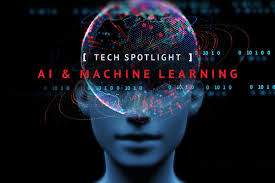Source: cio.com
By now most of us understand that, in our current era, artificial intelligence (AI) and its subset machine learning (ML) have little to do with human intelligence. AI/ML is all about recognizing patterns in data and automating discrete tasks, from algorithms that flag fraudulent financial transactions to chatbots that answer customer questions. And guess what? IT leaders appreciate the enormous potential.
According to a CIO Tech Poll of IT leaders published in February, AI/ML was considered the most disruptive technology by 62 percent of respondents and the technology with the greatest impact by 42 percent – in both cases double the percentage of AI/ML’s nearest rival, big data analytics. An impressive 18 percent already had an AI/ML solution in production.
A July CIO Pandemic Business Impact Survey asked a more provocative question: “How likely is your company to increase consideration of AI/ML as a way to flatten or reduce human capital costs?” Nearly half, 48 percent, were either very or somewhat likely to do so. The implication is that, as the economic downturn deepens, the demand for AI/ML solutions may well intensify.
Now’s the time to get your AI/ML strategy in shape. To that end, CIO, Computerworld, CSO, InfoWorld, and Network World have produced five articles that dissect the issues and provide meaningful recommendations.
The intelligent enterprise
Although AI/ML will doubtless replace some jobs, Matthew Finnegan’s Computerworld article, “AI at work: Your next co-worker could be an algorithm,” focuses on situations where AI systems collaborate with people to extend their productivity. One of the most interesting examples involves “cobots,” which operate alongside workers on the factory floor to enhance human capability.
But effective AI/ML solutions come in many forms, as CIO’s Clint Boulton recounts with a fresh batch of case studies, “5 machine learning success stories: An inside look.” It reads like a greatest hits of ML applications: predictive analytics to anticipate healthcare treatment outcomes, intensive data analysis to personalize product recommendations, image analysis to improve crop yields. One clear pattern: Once an organization sees ML success in one area, similar ML technology frequently gets applied in others.
Contributor Neil Weinberg highlights a highly practical use of AI/ML with direct benefit to IT in “How AI can create self-driving data centers.” According to Weinberg, AI/ML can handle power, equipment, and workload management, continuously optimizing on the fly – and in the case of hardware, predicting failure – without human intervention. Data center security also benefits from AI/ML capability, both in alerting admins to anomalies and in identifying vulnerabilities and their remediations.
ML in all its forms typically begins with finding patterns in large quantities of data. But in many instances, that data may be sensitive, as CSO contributor Maria Korlov reports in “How secure are your AI and machine learning projects?” Korlov observes that data security can often be an afterthought, making some ML systems inherently vulnerable to data breaches. The answer is to establish explicit security policies from the start – and in larger organizations, to dedicate a single executive to manage AI-related risks.
So where should you build your AI/ML solution? The public cloud providers offer highly attractive options, but you need to select carefully, argues Martin Heller, contributing editor for InfoWorld. In “How to choose a cloud machine learning platform,” Heller outlines 12 capabilities every cloud ML platform should have and why you need them. With so many data analytics workloads moving to the cloud, it makes sense to add ML to glean greater value – but crucially, you should make sure you can tap into the best ML frameworks and benefit from pre-trained models.
We’re still generations away from any AI equivalent of human intelligence. In the meantime, AI/ML will progressively infiltrate almost every type of application, reducing drudgery and offering unprecedented capabilities. No wonder IT leaders believe it will have the greatest impact.
